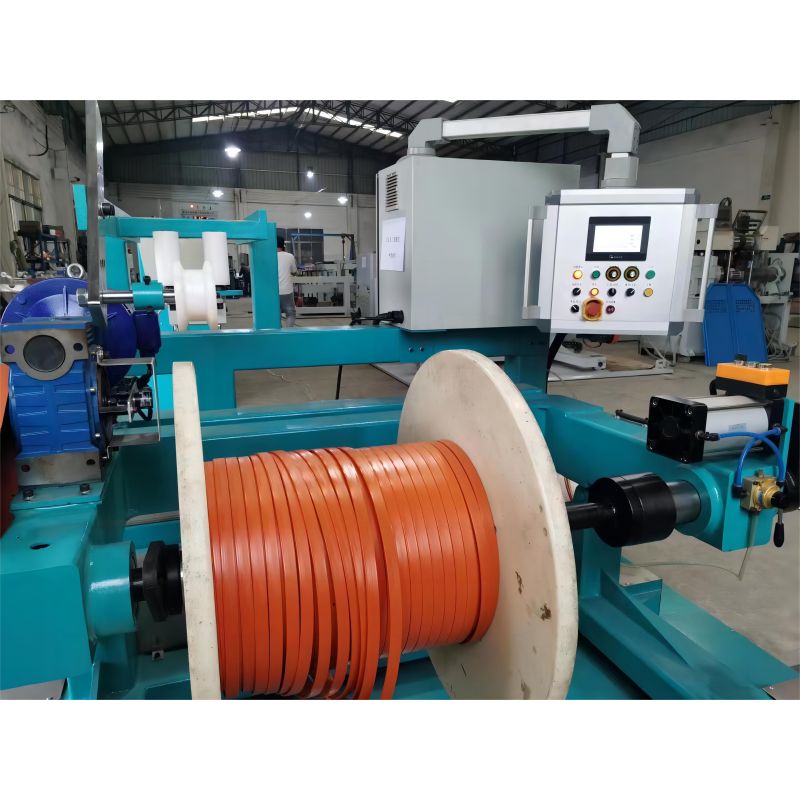In today’s fast-paced manufacturing environment, precision and efficiency are more important than ever. Cable coiling, a critical process in wire and cable production, is no exception. Dongguan NHF Machinery Co., Ltd (hereafter referred to as NHF) has been at the forefront of technological innovation in this sector, particularly with their advanced Cable Coiling Machines featuring digital control. But can these machines truly reduce operational errors? Let’s delve into this question and explore the broader impact on the wire and cable industry.
The Evolution of Cable Coiling: From Manual to Digital
Historically, cable coiling was a labor-intensive process prone to human error—miscounts, inconsistent coil sizes, and damaged cables were common issues. Manual operations often resulted in significant material waste and costly downtime. As the industry evolved, the demand for higher precision and lower error rates led to the development of automated solutions.

NHF recognized these challenges early on and invested heavily in research and development. Their Cable Coiling Machines now integrate state-of-the-art digital control systems, setting new benchmarks for accuracy and reliability in the industry.
How Digital Control Minimizes Errors
The core advantage of digital control in cable coiling machines lies in its ability to automate the entire coiling process. By utilizing sensors, programmable logic controllers (PLCs), and user-friendly interfaces, NHF’s machines can precisely measure, cut, and coil cables according to pre-set specifications. This automation dramatically reduces the likelihood of human error, ensuring each coil meets stringent quality standards.
- Consistent Coil Size: Digital systems maintain uniformity by automatically adjusting parameters in real-time.
- Error Detection: Built-in diagnostics and alarms immediately alert operators to anomalies, minimizing defective output.
- Data Logging: Every operation is recorded, facilitating traceability and continuous improvement.
Moreover, NHF’s digital control systems are designed to be intuitive, reducing the learning curve for operators and further decreasing the risk of operational mistakes.
Integration with Automatic Winding Machines and Automatic Disc Change take-up machines
The cable manufacturing process is rarely isolated to just coiling. NHF’s product portfolio also includes the Automatic Winding Machine and the Automatic Disc Change Take-Up Machine, both of which are engineered to work seamlessly with their cable coiling machines.
The Automatic Winding Machine ensures that cables are wound onto reels or spools with precise tension and alignment, complementing the accuracy of the digital coiling process. Meanwhile, the Automatic Disc Change Take-Up Machine automates the replacement of take-up reels, minimizing downtime and further reducing the opportunity for manual errors. When integrated into a production line, these machines create a fully automated, error-resistant workflow.
Industry Trends: Automation and Digitalization
The move towards automation and digitalization is not unique to NHF. Across the global wire and cable industry, manufacturers are embracing smart factory technologies to enhance productivity and quality. According to recent industry reports, companies that have adopted digital control and automation have seen error rates drop by up to 40%, while overall equipment effectiveness (OEE) has improved significantly.
The trend towards Industry 4.0—where machines communicate and self-optimize—has made digital control in cable coiling machines not just an option, but a necessity for manufacturers aiming to stay competitive. NHF’s focus on integrating digital control systems positions them as a leader in this transformation.
Real-World Benefits: Case Studies from NHF Clients
Numerous NHF clients have reported tangible benefits after upgrading to digital control cable coiling machines. For instance, a leading telecommunications cable manufacturer noted a 25% reduction in rework rates and a 30% increase in throughput within the first six months of implementation. By leveraging the synergy between the Cable Coiling Machine, Automatic Winding Machine, and Automatic Disc Change Take-Up Machine, the company achieved a fully automated production line that consistently delivered high-quality coils with minimal intervention.
Such results underscore the value of digital control—not only in error reduction but also in boosting overall efficiency and profitability.
Challenges and Considerations
While the advantages are clear, transitioning to digital control systems does come with challenges. Initial investment costs can be significant, and companies must ensure their workforce is adequately trained to operate and maintain these advanced machines. However, NHF addresses these concerns by offering comprehensive after-sales support, training programs, and remote diagnostics to help clients maximize their return on investment.
The Future of Cable Coiling: What’s Next?
Looking ahead, NHF continues to innovate by exploring artificial intelligence (AI) and machine learning technologies for predictive maintenance and process optimization. The next generation of Cable Coiling Machines may soon feature self-learning algorithms that further reduce errors and adapt to new cable types and production requirements on the fly.
As the industry moves towards even greater automation, the integration of NHF’s Cable Coiling Machine with digital control, alongside the Automatic Winding Machine and Automatic Disc Change Take-Up Machine, will set new standards for quality, efficiency, and reliability.
Conclusion
Can a Cable Coiling Machine with digital control reduce errors? The answer is a resounding yes. With the expertise of Dongguan NHF Machinery Co., Ltd, the integration of advanced automation and digitalization is transforming cable manufacturing, minimizing errors, and paving the way for a smarter, more efficient industry. As demand for high-quality cables continues to rise, NHF’s commitment to innovation ensures that manufacturers have the tools they need to succeed in a competitive global market.
Post time: Sep-30-2025
